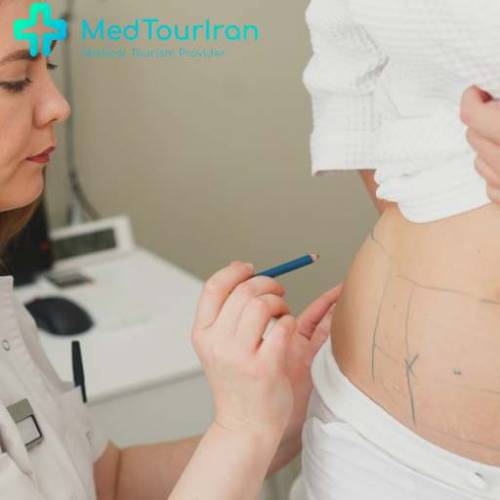

Strabismus is an eye condition in which the eyes are not aiming at the same target and tending to point in different directions. A person with strabismus does not see in both eyes simultaneously. In strabismus, one eye looks directly at the object you’re viewing while the other turn in, out, down or up.
Commonly known as cross-eyed or wall-eyed, this eye condition is mostly developing in children and affects nearly 2 to 4 percent of the population. Your children may have born with strabismus or get it later in life; however, in most children strabismus is intermittent or in some others, it is always present. Strabismus also develops in adults as well and causes double vision.
Normally, the eyes work together to point at the same place. Since strabismus is most commonly described by the direction of the eye misalignment, so types of strabismus depend on the eye tendency to where the eye will fixate. There are four types of strabismus and each depends on the eye direction; therefore, the eye turns in (esotropia), turns out (exotropia), turns down (hypotropia), and turns up (hypertropia). Esotropia and exotropia are the most common eye condition among children.
Strabismus could be caused by a variety of reasons; however; the most common reasons are poor neuromuscular between the eye and brain or abnormal development of the muscle responsible for high movement. This misalignment of the eye can cause the brain to receive two different images forcing them to ignore the image from one eye and favor the other one. Such behavior from the brain may result in poor vision development in the ignored eye.
However, the opposite can also be true where the misalignment is caused by poor vision and not high muscles. This forces the brain to use the dominant eye while making the other eye weaker. An adult having experienced neurological trauma from a stroke or Graves’ disease, can also experience strabismus. Other causes may be linked to congenital factors in that you or your spouse have strabismus and your children will be born with cross-eye. In some rare cases, cross-eye appears in old age due to an injury to the optic nerve
Around 2 to 4 percent of children are affected with cross-eye. Most of the symptoms related to strabismus associated with vision. Studies have shown that people with eye turn tend to be alone, make less money, and have some different psychosocial issues that come up. The misalignment of both visual eye access is the first sign of strabismus. However, other crossed eye symptoms are as follow;
- Eyes that look misaligned
- Eyes that don’t appear to move together
- Tilting head to look at things
- Faulty depth perception
- Double vision and poor vision.
Having an eye disorder could be stressful because when someone is looking at you and your eye is crossing seems to be a strange look. Children should have regular check-ups for any possible sign of strabismus. This is because the younger the person is the more effective the treatment is likely would be. Strabismus is treated either through surgery or through glasses or a combination of both. It’s not a surgery for right now, it’s a surgery for when your child starting school and going to college and looking for a job.
Keep in mind that surgery is only used if other treatments are not effective so, a small amount of strabismus like prism correction and other optical problems are regarded as non-surgical treatments. The most common treatments of strabismus are eyeglasses or contact lenses, prism lens, orthoptics (eye exercise), medication, patching, and eye muscle surgery.
As I mentioned earlier, surgery is needed when other treatments fail to treat strabismus. Usually, in children with some types of constant strabismus, surgery is recommended and is regarded as a kind of cosmetic surgery, however; it is not so for an adult. The surgery restores the normal appearance and normal vision of the eyes.
During the surgery, the eyelids are opened with a lid speculum then, a small incision is made in the conjunctiva to have access to the muscle. The surgery involves moving the eye muscles to adjust the position of the eye. The process is undertaken under general anesthesia in an operating room. After Strabismus surgery, the patient does not require an overnight hospital stay and the surgery rarely causes bleeding.
Almost all surgeries carry risk and strabismus surgery is no exception. Fortunately, strabismus surgery is one of the successfully reported surgeries so, you needn’t worry. Furthermore, the success rate of this surgery depends on the person’s particular condition. You could speak to your doctor about the risk before the operation. You may experience the following side effects:
- Your eye may become red for a couple of months
- Usually, after a week, you may experience double vision.
- Uncorrected or overcorrected surgery
- Infection and excessive scarring
- Changes in pupil size
MedtourIran is one of the facilitators in Iran that provides treatment in all kinds of diseases, including strabismus for foreign patients. The characteristics that make MedtourIran one of the bests companies in this regard are the affordable prices and the services MedtourIran provides for its patients. We have medical centers in Tehran, the capital center of Iran, Shiraz, and Mashhad, equipped with the latest equipment and technology. If you are looking for strabismus surgery in Iran, feel free to contact MedTourIran to get a free consultation. Besides, you can save most of your money and get the highest quality treatment for strabismus surgery.
The strabismus surgery cost depends on the degree of squint, your eyesight, and its case history. The average strabismus surgery cost in the world is $2000, but in Iran, it costs around $500. Lower price indeed is one of the salient features in Iran, but Iran has experienced surgeons in eye surgery and this is an important factor most patients are looking for.
Read more:

22 Jun 2020

18 Jun 2020

16 Jun 2020

15 Jun 2020

27 May 2020

12 May 2020